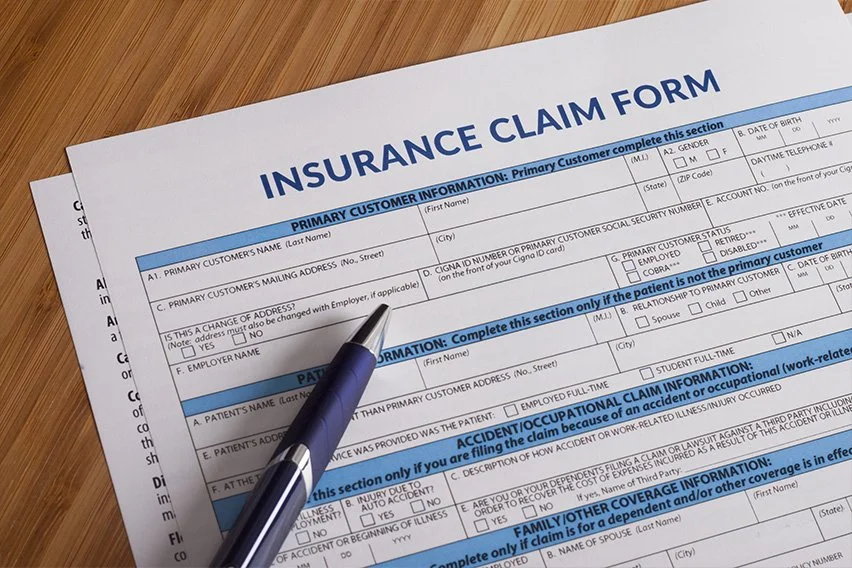Insurance is an essential part of life that helps protect you and your family from unexpected financial burdens. Whether you’re looking to safeguard your home, car, health, or even your life, insurance offers a safety net when life throws unexpected challenges your way. In this comprehensive guide, we’ll explore everything you need to know about insurance—how it works, the different types of insurance, and how to choose the right plan for your needs.
What is Insurance and Why is it Important?
Insurance is a contract in which a person or entity (the policyholder) pays a premium to an insurance company in exchange for financial protection against certain risks. It provides a safety net, helping you recover from financial setbacks caused by accidents, illnesses, property damage, and even death.
The importance of insurance lies in its ability to provide peace of mind. It allows individuals and families to face life’s uncertainties with confidence, knowing they have financial coverage if something goes wrong.
Types of Insurance You Need
There are various types of insurance policies available to help you cover different aspects of your life. Each type is designed to protect you in specific ways, so it’s essential to understand which ones best suit your needs.

- Health Insurance
Health insurance is perhaps the most critical type of insurance. It helps cover the costs of medical expenses, including doctor visits, hospital stays, surgeries, and prescription drugs. With the rising costs of healthcare, having a solid health insurance plan can protect you from excessive medical bills.
Tip: Many countries have government-mandated health insurance, but private plans offer more flexibility and additional coverage.
- Life Insurance
Life insurance provides financial protection to your family and loved ones in the event of your passing. It helps cover funeral expenses, pay off debts, and support the ongoing living costs of your beneficiaries.
There are two primary types of life insurance:
- Term Life Insurance: Coverage for a specific period, typically 10-30 years.
- Whole Life Insurance: Coverage for your entire lifetime with an investment component.
Tip: Life insurance is especially important if you have dependents who rely on your income.
- Auto Insurance
Auto insurance covers damages to your car, liability for accidents, and medical expenses following a car accident. Most places legally require drivers to have a minimum level of auto insurance to protect against financial losses from accidents, theft, or damages.
Tip: Consider adding collision and comprehensive coverage for greater protection, especially if your vehicle is new or expensive.
- Home Insurance
Homeowners’ insurance covers damages to your home, including protection against fire, theft, and natural disasters like earthquakes and floods. It also covers liability for injuries or accidents that occur on your property.
Tip: Ensure your policy includes replacement cost coverage to rebuild your home in case of severe damage.
- Travel Insurance
Travel insurance protects against unexpected travel disruptions like trip cancellations, lost luggage, or medical emergencies while traveling. It’s especially useful when traveling abroad, where healthcare costs may be high.
Tip: Look for a travel insurance plan that covers both medical expenses and trip interruption.
How to Choose the Right Insurance Plan
Choosing the right insurance plan is crucial to ensuring you have adequate coverage. Here’s a step-by-step guide to help you select the best insurance policy for your needs.

- Assess Your Needs
The first step is to assess what you actually need. Do you need car insurance? Health insurance? Maybe both? Think about your life circumstances:
- Do you own a home or rent?
- Do you have dependents or elderly parents to support?
- Are you frequently traveling or involved in activities with risks?
Identifying these needs will guide you toward the right coverage.
- Compare Policies
Once you know what types of insurance you need, it’s time to compare policies. Look for:
- Coverage: Does the policy provide enough protection?
- Premiums: Is the policy affordable, and do the premiums fit within your budget?
- Exclusions: Are there specific situations or events that are not covered?
Use online comparison tools or consult an insurance broker to compare various policies from different providers.
- Understand Your Budget
Insurance premiums can vary significantly based on coverage limits, policy type, and your personal risk factors. It’s essential to understand how much you can afford to pay each month and balance that with the coverage you require.
Tip: While a lower premium might seem appealing, make sure the policy offers the protection you truly need to avoid unexpected costs later.
Understanding Insurance Costs
The cost of insurance depends on several factors:
- Premiums: The amount you pay periodically (monthly, quarterly, or annually).
- Deductibles: The amount you must pay out-of-pocket before insurance kicks in.
- Coverage Limits: The maximum payout your insurer will provide.
How to Lower Your Insurance Premiums:
- Increase Your Deductible: A higher deductible lowers your monthly premium but means you’ll pay more out of pocket in the event of a claim.
- Bundle Policies: Many insurers offer discounts when you bundle multiple policies (e.g., home and auto insurance).
- Maintain a Good Credit Score: Insurance companies often offer better rates to individuals with higher credit scores.
Common Insurance Terms You Should Know
Understanding insurance terminology is crucial to making informed decisions. Here are some key terms:
- Premium: The amount you pay for your insurance coverage.
- Deductible: The amount you pay out of pocket before your insurance kicks in.
- Coverage Limit: The maximum amount the insurer will pay for a claim.
- Exclusions: Situations or conditions that are not covered by your policy.
How to File an Insurance Claim

Filing an insurance claim can seem daunting, but it’s a straightforward process. Here’s how to do it:
- Notify Your Insurer: Contact your insurance provider immediately after the incident.
- Provide Documentation: Submit necessary documents such as police reports, photos, or medical records.
- Follow Up: Keep track of the claim status and stay in touch with your insurer to ensure timely resolution.
Insurance Myths vs. Facts
There are several myths about insurance that can lead to confusion. Let’s debunk a few:
- Myth: “Insurance is too expensive.”
Fact: There are insurance policies for every budget. Comparing different plans can help you find affordable options. - Myth: “I don’t need life insurance because I’m young and healthy.”
Fact: Life insurance is more affordable when you’re young and healthy, and it provides essential protection for your loved ones. - Myth: “Car insurance covers all types of damage.”
Fact: Auto insurance only covers specific types of damages. You may need additional coverage for things like natural disasters or theft.
Conclusion: Why Insurance is Essential for Your Financial Security
Insurance is not just a financial product; it’s a safety net that helps you manage risks and protect what matters most. From healthcare to property, to life, insurance provides the peace of mind that allows you to focus on what truly matters.
Whether you’re looking to protect your health, home, car, or future, choosing the right insurance plan is essential to maintaining financial security and safeguarding your loved ones.
Ready to Get Insured?
[Get a Free Quote and Start Protecting Your Future Today!]
Related Posts You’ll Enjoy:
